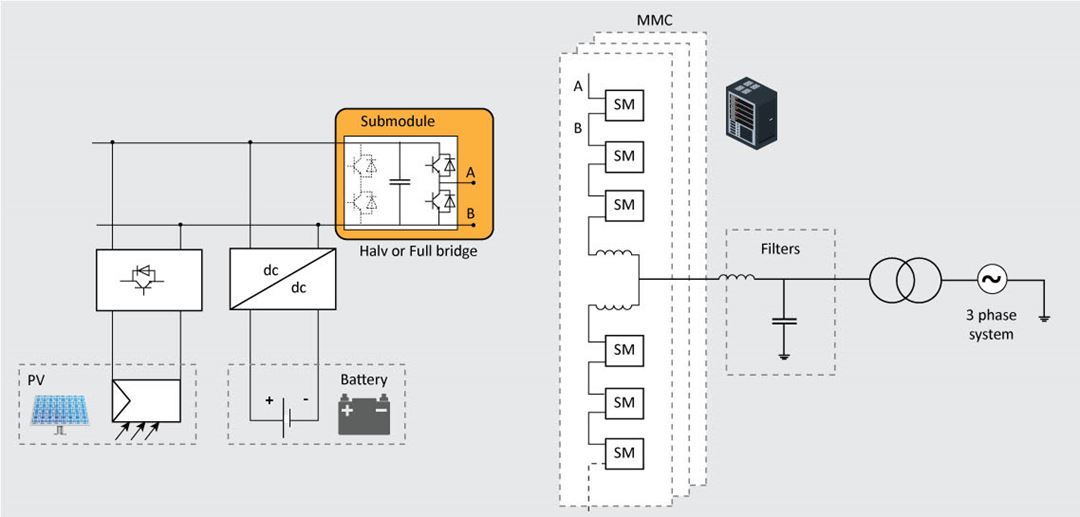Despite the low energy prices, the Norwegian solar market is growing as well, about 300 % in the last 3 years. A collaboration between Norwegian and Indian institutions can bring new opportunities in the near future in the field of solar energy. PVBESS is funded by The Department of Science and Technology (DST) of the Government of India and the Research Council of Norway (RCN) in a program for joint funding of Indo-Norwegian joint research projects called INDNOR.
Photovoltaic (PV) solar energy is the fastest-growing energy source in the world. It is expected that the global solar market will continue with high growth, about 50% in the next five years. This growth is related to the environmental implications of traditional generation and governmental incentives for making a green transition. However, in the power system perspective, high penetration of PV is a great challenge. The intermittent nature of the solar resources may cause output power fluctuations. These fluctuations can affect the balance between generation and load, which is translated into frequency regulation issues, voltage fluctuations, or flickers in the main grid.
There are many alternatives for addressing the intermittency of PV power, e.g. curtail of power but at the cost of wasting PV power. So far, the most attractive alternative is to couple PV with energy storage systems (ESS). Between all the alternatives in ESS, batteries are a mature technology at an affordable cost at a low or medium voltage level.
The coupling between battery or PV modules with the main grid requires power-electronic interfaces known as power converters. These converters are devices that allow interacting DC (Direct current) sources with AC (alternating current) sources. DC voltages are produced by PV and batteries, while AC voltages are the traditional way electricity is transmitted and distributed in the electric grid. The core of the integration of PV generation and batteries into the grid is, in fact, the power-electronic interfaces.
There are many configurations of converters that can be used for this purpose, and considerable research effort is being conducted for optimizing the current configurations for many years. Modular multilevel converters (MMCs) are emerging as a new trend in high voltage applications that can be used in the low or medium voltage range. MMCs are composed of a series of building blocks, each working as small converters.
An MMC can be considered as a system of systems. MMC can offer modularity, scalability, low harmonic distortion, and high reliability to PV applications, especially in a distributed configuration. Moreover, MMC has advantages for PV applications, as one PV cell can be connected to each of the building blocks of the MMC. Thus, each PV cell can operate independently to maximize efficiency and increase redundancy. The MMC topology can be also well suited for integrating batteries into the system on each module.
The proposed hybrid topology in the PVBESS project consists of a conceptual MMC-based interface for PV systems, embedding a battery energy storage in the same interface. This can be easily scalable to medium voltage range. The main objective of the project is to produce both theoretical and experimental evidence to assess the performance of the conceptual configuration.
More specific objectives of the projects can be described as follows:
- Select a suitable power converter configuration for grid integration of PV systems with embedded BESS.
- Develop control strategies for power-sharing and voltage balancing in PV cells and batteries using the inherent features of the MMC. The main control objective is to maximize overall efficiency while implementing maximum power point tracking for the PV cells and regulating the state-of-charge (SOC) for the batteries.
- Validate experimentally the control algorithm and the design of the system in a relevant laboratory environment.
- Assess the technical and economic feasibility of the proposed scheme.
Additionally, in the long-term, the project aims to establish long-standing cooperation between Indian and Norwegian institutions to carry out broader research projects in the field of power electronics than can contribute to the penetration of the photovoltaic system in India and Norway.
Project partner: Indian Institute of Technology Delhi
The project is financed by the Research Council of Norway

